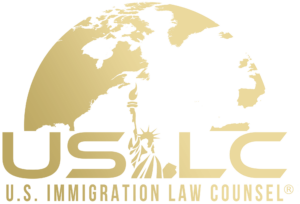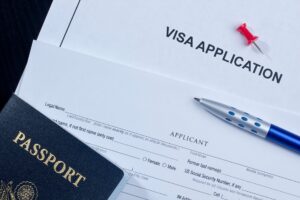Understanding and following the F-1 visa requirements is essential for maintaining your student visa status in the USA. Especially when it comes to student visas, there are many requirements that students must meet to qualify for a visa. After that, they must continue to meet certain requirements to remain in the U.S. as they are completing their education. Keep reading to find out what the F-1 visa requirements are and how students can maintain their student visa status in the USA.
Importance of Lawful Status For Foreign Students
Staying in lawful status in the United States is essential for foreign students who are here on an F-1 visa. Maintaining lawful status simply means you are staying in status and are meeting the requirements necessary to remain in the United States.
If you fail to maintain lawful status, this could result in F-1 visa violation consequences, as you will no longer be legally living in the U.S. If you lose your legal immigration status, this would make you an illegal immigrant, which could result in deportation. Additionally, failing to maintain legal status can result in difficulties getting a U.S. visa later on or the possibility of losing the right to re-enter the United States in the future.
Students who failed to stay in status will also not be able to receive employment authorization, which is often essential for students.
Here are some examples of what you need to do to maintain lawful status on an F-1 visa:
- Do not let your I-20 expire.
- Be enrolled full-time.
- Only work if you have authorization.
- Keep your address updated.
- Maintain a valid passport.
F-1 students should be familiar with all of these requirements and should regularly check to make sure all of their documentation is up-to-date and valid.
If, for some reason, you have failed to stay in status, you need to hire an immigration attorney. An attorney will be familiar with the USCIS F-1 visa guidelines and can help you navigate the different options available to you. Having an attorney on your side will be especially crucial if you are facing the worst case scenario, which is possible deportation.
Understanding CPT (Curricular Practical Training)
Curricular practical training, or CPT, is an option F-1 visa students have to learn practical skills that are directly related to their majors. It offers practical training in the form of work authorization, allowing foreign students to legally work in the United States. Examples of CPT include employment connected to your major, paid or unpaid internships, on campus employment, cooperative education experiences, or participation in a practicum.
Having the option of being able to work while on a visa is a huge benefit that provides students with much more freedom. Because of this, there are certain requirements you must meet to obtain this benefit. One of the main requirements is that you have an active F-1 status and continue to maintain lawful status.
Understanding OPT (Optional Practical Training)
There are many aspects of having an F-1 visa that foreign students need to be aware of. Optional practical training, or OPT for international students, is an option available to some foreign students with an F1 visa. Students who qualify for this can get up to 12 months of OPT work authorization. This can include pre-completion, post-completion, and an OPT STEM extension.
One of the most important things students need to understand about OPT is that one of the eligibility requirements is that you are maintaining a valid F-1 status when you apply. If you have failed to maintain status, you won’t qualify for OPT and may run into other immigration issues as well.
Travel Rules for F-1 Students
It is possible for students on an F-1 visa to travel outside the United States without compromising their lawful status. However, you cannot be outside the U.S. for more than five months with an F-1 visa. If you do this, you will have to get a new I-20 before you’re able to legally return to the United States.
When you are re-entering the U.S., there are many types of documentation you need to present to show that you have legal F-1 status. Here is a list of the documents you need to bring with you for re-entry:
- A passport that is valid for at least six months longer.
- A valid F-1 visa.
- Form I-20 endorsed for travel by DSO.
Also, although it is not strictly required, it can be beneficial to also provide evidence of financial resources and evidence of student status.
If you need to travel outside the U.S. with an F-1 visa and you are concerned about this, you should get the help of an immigration attorney. They will be up-to-date with travel rules and regulations and can help you plan ahead and be prepared. This is especially important if you know that you will have to leave the U.S. for more than five months and need to plan your strategy for legal re-entry.
Hire an Immigration Attorney Today
Are you looking for the STEM OPT rules for 2025 so that you can maintain legal status in the U.S.? Contact us today at U.S. Immigration Law Counsel at 800-666-4996 to speak with an immigration attorney about your situation. We will deal with the government, so you don’t have to!
FAQ Section
What happens if I fall below full-time enrollment?
This could result in you falling out of lawful status unless you have prepared for this by obtaining DSO approval for a reduced course load.
Can I work off-campus on an F-1 visa?
Yes, it is possible for foreign students to work off-campus with an F-1 visa if they get the correct work authorization. Both CPT and OPT provide options for this, or you could get economic hardship approval.
What if I change schools while on an F-1 visa?
While it is possible to change schools when you have an F-1 visa, you will need to request a SEVIS transfer to do this without falling out of status. Once you have requested this, you will receive a new I-20 from the new school that you are going to be going to.




